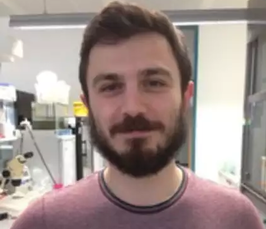Developmental genetics of adaptation
Doctoral defense by Nidal Karagic
- Datum: 31.01.2022
- Uhrzeit: 12:00 - 14:00
- Vortragende(r): Nidal Karagic
- Ort: Online oral examination
- Raum: Online

For decades after Darwin´s “The origin of species” was published, the prevailing paradigm
was that natural selection is the only driving force in evolution that eventually leads, via
gradual change, to adaptation and speciation. However, this rather selectionist view failed
to explain different observations. Later, evolutionary biologists began to recognize that
development could fill these gaps, providing a more comprehensive take on the
evolutionary theory. First, important contributions thereof urged to consider the entire
ontogeny of an organism when studying evolutionary histories, as during ontogeny the
selective pressures change. Second, it was acknowledged that phenotypic change can
precede genetic change, i.e. different phenotypes can develop from the same genetic code.
Phenotypic plasticity has since been recognized as an important source for evolution and
it has become clear that to truly understand how species adapt, we need to understand
the entire developmental program of the traits in question. To study adaptations and their
underlying developmental genetic mechanisms, cichlid fish offer great opportunities for
several reasons: 1.) most adaptive traits have evolved multiple times independently
providing natural replicates, 2.) the adaptive value of many traits has been established,
and 3.) genomes of multiple species have been sequenced allowing for extensive
comparative analyses.
The first chapter of this thesis considers phenotypic plasticity in vertebrate teeth
with a focus on how phenotypic plasticity could influence evolutionary outcomes. Teeth
are still generally regarded as immutable structures that, once developed, do not change
anymore. Being crucial for the survival of most vertebrates, teeth need to perform
specialized tasks and thereby determine what food items can be consumed. Therefore, it
is important that teeth can change in response to fluctuating food sources via phenotypic
plasticity. Dental plasticity appears to be more widespread than previously assumed,
being observed in different groups of vertebrates, such as fish or mammals. Adaptive
phenotypic changes in teeth allow for the rapid and efficient utilization of multiple
different food sources and can potentially even lead to fixed adaptations when genetic
assimilation occurs.
Two chapters of this thesis are dedicated to the question of what are the
developmental genetic mechanisms that drive convergence in cichlids. To address this
question, I focused on the convergence in mollusc-crushing lower pharyngeal jaw
phenotypes. As an adaptation to hard food, such as molluscs, multiple cichlid species
independently evolved large teeth and massive lower pharyngeal jaws. Chapter III focuses
on identifying genes that are involved in tooth development in cichlids. Tooth
development is relatively conserved across vertebrates. However, cichlids have a
repertoire of de novo genes that are specific to their family. These genes formed inside a
cluster of conserved tooth genes and got incorporated into the developmental genetic
networks of odontogenesis, showing convergent associations with mollusc-crushing
morphologies.
In Chapter IV, I used genome-wide expression analysis to investigate how
convergent developmental genetic mechanisms of mollusc-crushing lower pharyngeal
jaws are across Neotropical cichlid species. Overall, there is only little convergence in
gene expression patterns across all contrasts. However, the degree of convergence
depends on the geographic setting of speciation, with character displacement in gene
expression (i.e. greater expression differences between sympatric species) being
observed in sympatric species. This could constitute a barrier to gene flow under the
assumption that hybrid misexpression affects ecological viability. Such character
displacement in gene expression could generally contribute to intrinsic barriers to gene
flow, even in traits not directly associated with important ecological tasks.
With this thesis, I want to contribute to our understanding of developmental
genetic mechanisms of a convergent adaptation and highlight the potential role of gene
expression in speciation. To conclude, I provide some future directions of research that
build on the findings reported here.